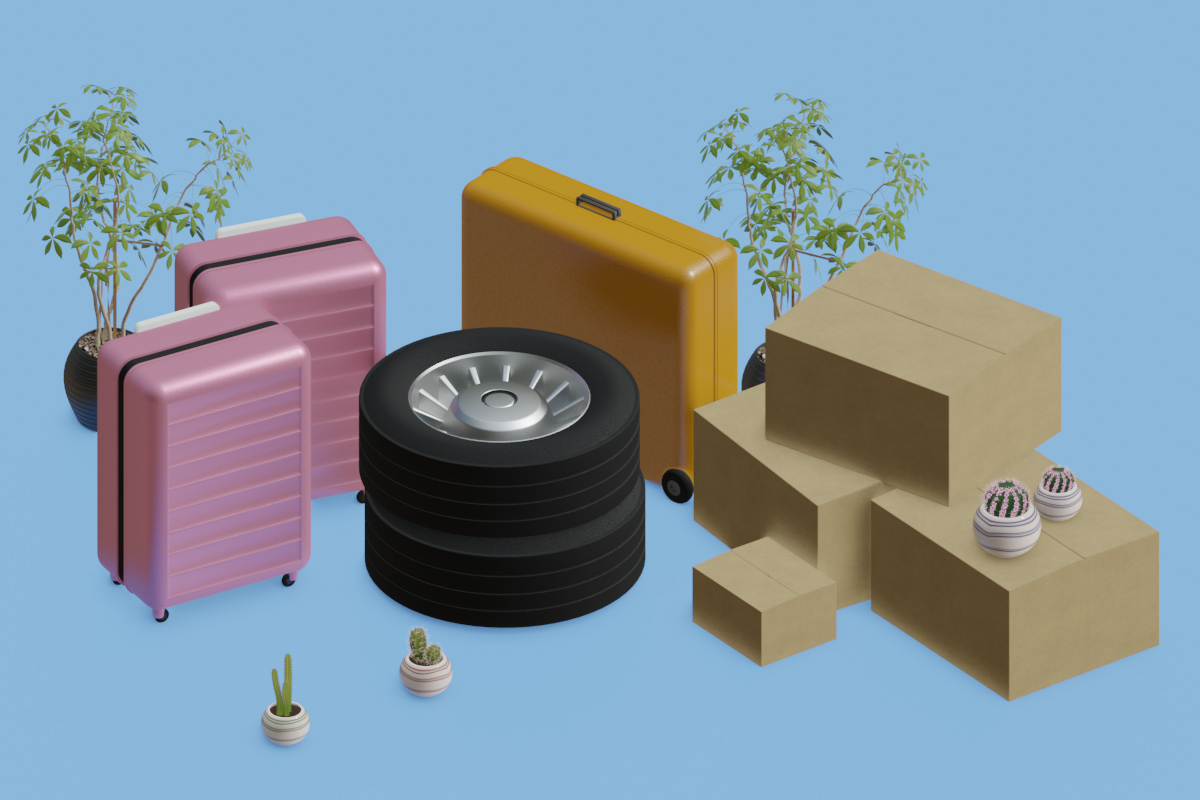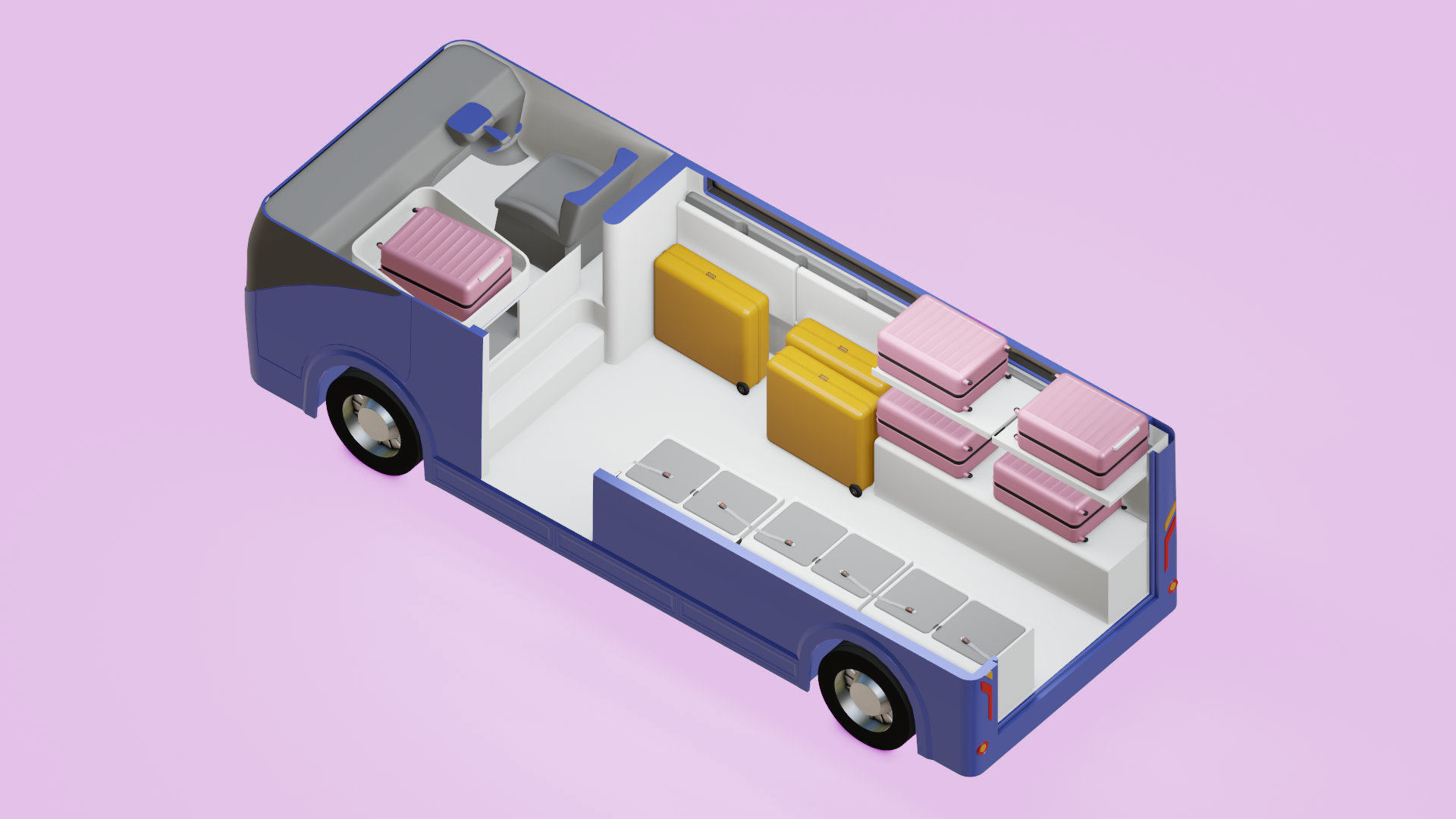EV van concept design
When
2021Client
NexportTeam
- Nick Gilmore
- Doménique van Gennip
- Prof Ilpo Koskinen
- Christian Tietz
- Arianna Vignati
- Ke Li
For Nexport, a scale-up electric transport vehicle company, the university team I was part of executed an early-stage discovery and ideation project. We focused on van and minibus drivers and their passengers. Our objective was to establish requirements for a novel electric van that could function as a passenger vehicle during peak hours, and then swap to a parcel van during off-peak hours. Our objective was to build an initial business case, investigate technical options, and propose a R&D plan for a longer follow-up project.
I did stakeholder interviews, derived design requirements, and integrated my insights into vehicle concept generation. As part of our communication to the client’s senior management, I also worked on animating a key concept characteristic.
Interviews & requirements generation
In a little over a week, I interviewed 6 van drivers, 1 fleet service manager, and 1 passenger often taking her pram on minibuses. After transcription and analysis, I was able to derive a range of requirements. I cannot share these requirements publicly but we landed on a one-liner brief for our client:
Design an electric vehicle for people and parcel modes that can carry at least 12 peoples or 2 tonnes of cargo. The time required for restoring the vehicle’s consumed energy should be less than that required for refuelling or driver resting time to enable the same operational uptime. The solution must also feature a service-system which adds value for its users.
Concept directions
We identified four directions for Nexport to consider. The most interesting unique value proposition was functional change-overs to enable a single vehicle to take on multiple roles during the day. No existing vehicle on the market could offer this, yet the various roles each have clear and growing demand. Directions 2, 3, 4 as shown in the graphic below would be ground-up developments, at minimum adapting an existing vehicle platform. Given the market uncertainty and capital risk, we proposed for Nexport to retrofit an existing vehicle into a minimum viable product. This MVP could be used for market evaluation and technical assessment ahead of the development of a series production vehicle.
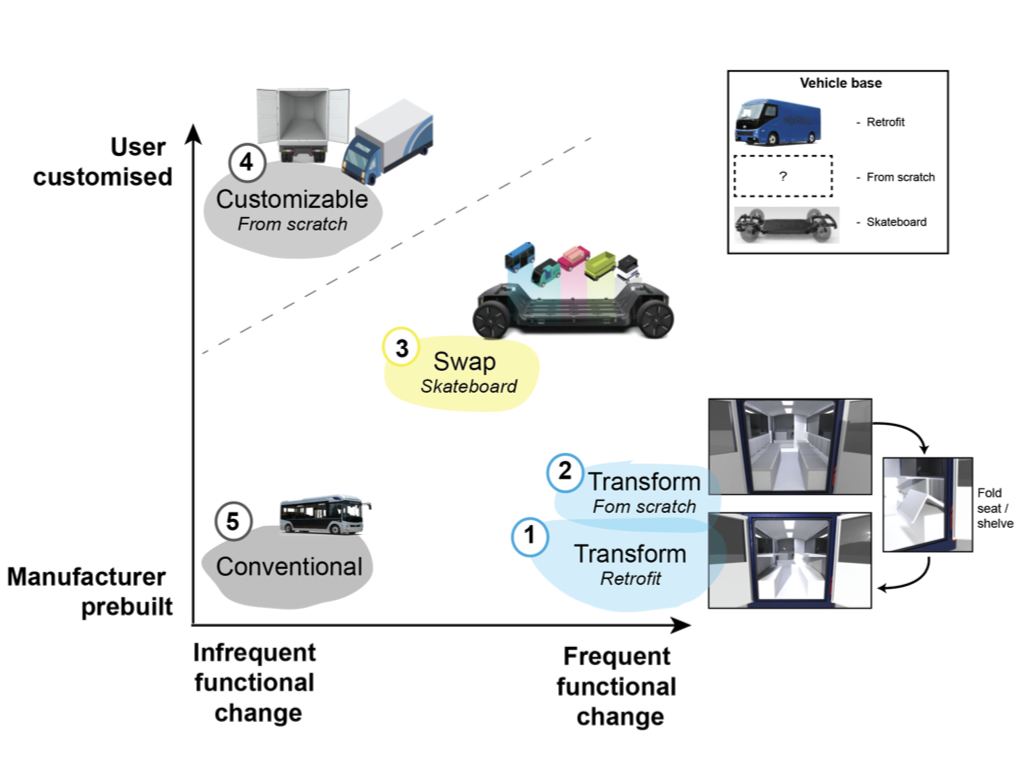
Concept animation
The initial concept and modelling was taken on by my colleagues, and student assistant Ke Li in particular. While preparing for our presentation to Nexport’s executives, I reworked the model and animated it to show off our key value proposition (see video above). It proved very useful to articulate our seat-to-shelf concept. For a few still images, I also added luggage and cardboard boxes to further illustrate what the vehicle could look like. This also made it clear which vehicle additions require attention if a follow-up project were to build this.
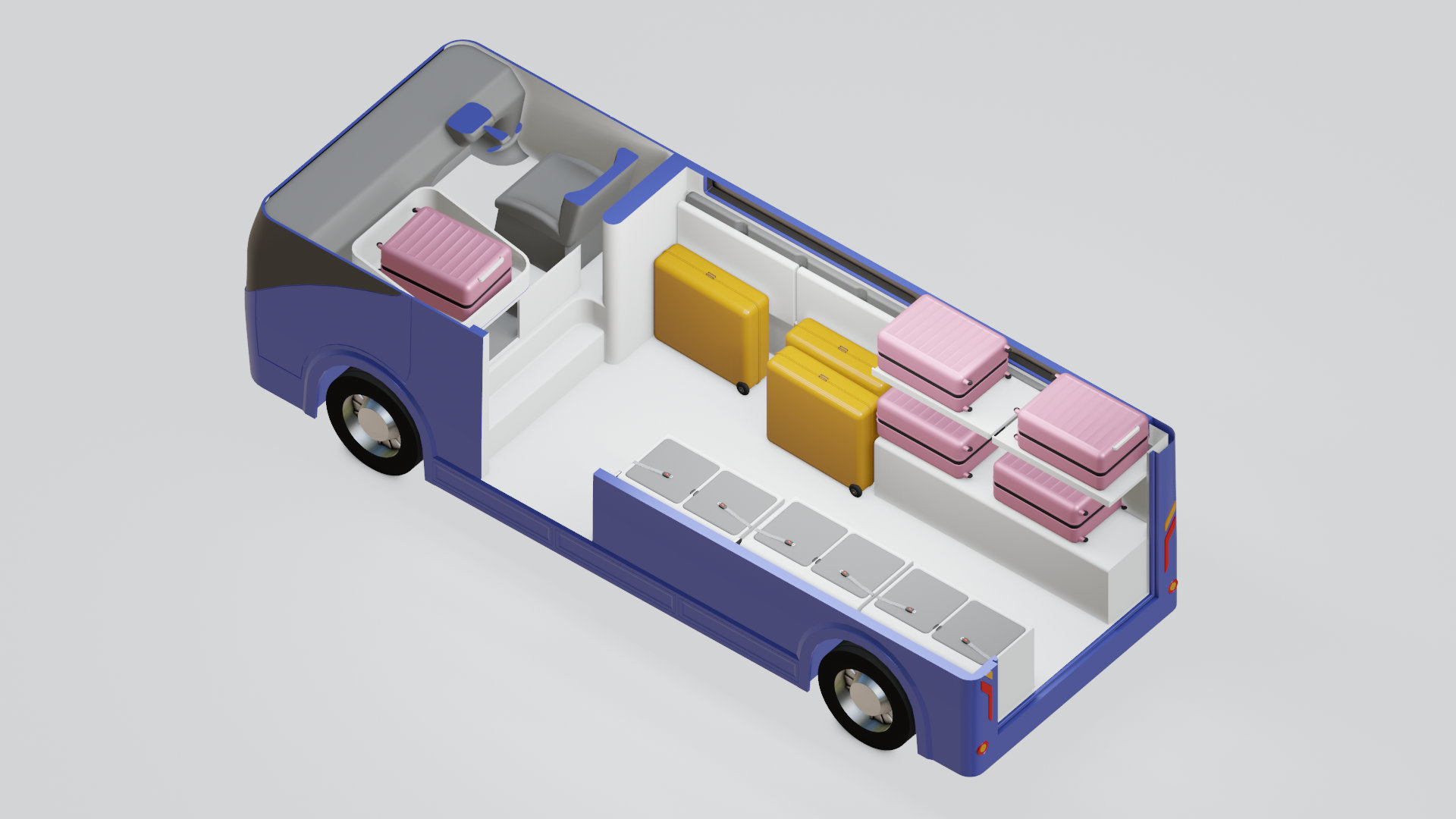
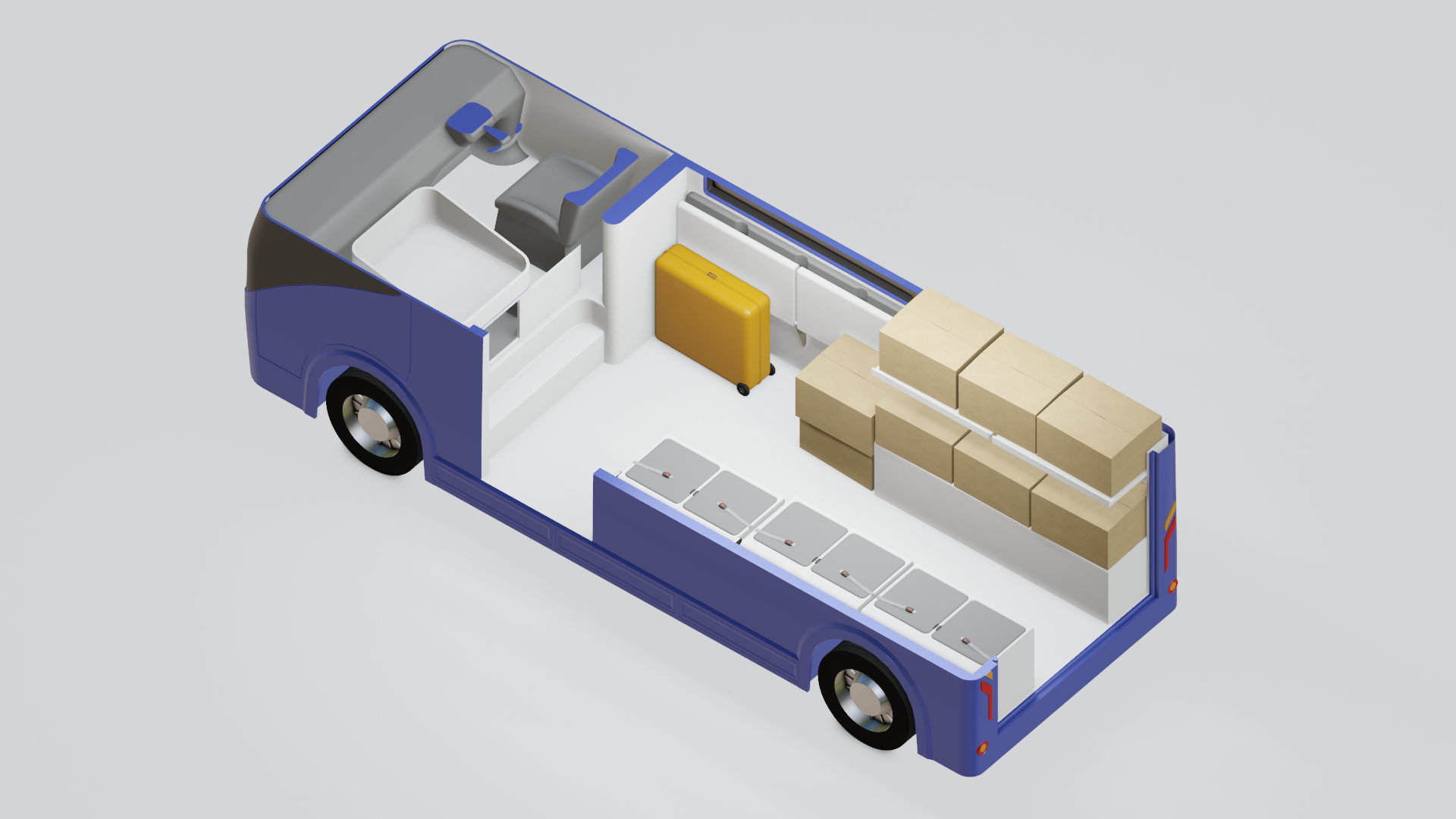
Follow-up
Nexport greenlit the project. A few months in, I joined Nexport and worked with the uni to execute the concept build.
